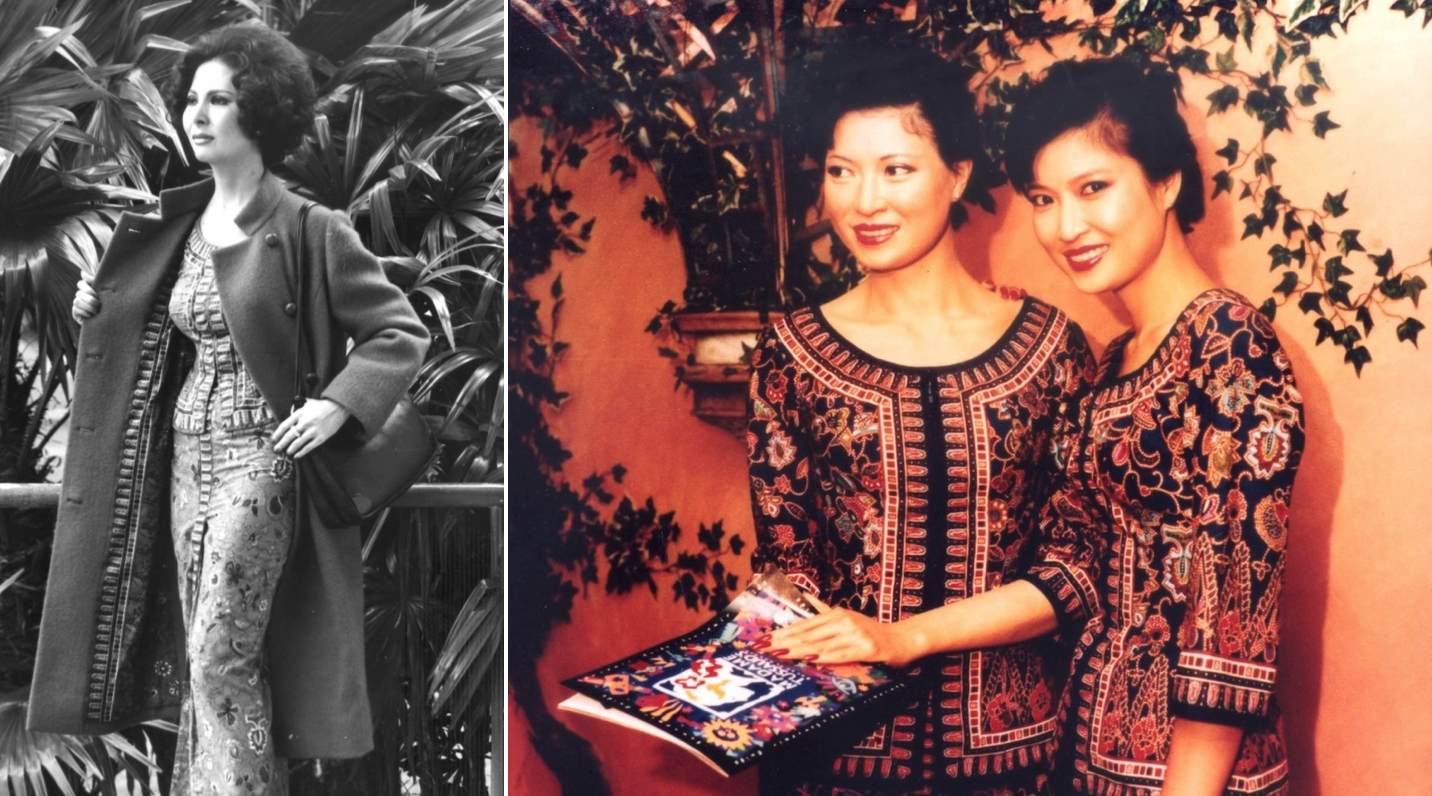With her sarong kebaya uniform, the Singapore Girl has become a symbol for Singapore Airlines's tourism and hospitality.
And this year, the iconic kebaya uniform turns 50.
Originated in 1968
Singapore's commercial aviation industry goes a long way back, beginning with the formation of Malayan Airways Limited (MAL) in 1947.
 Uniform for Malaysian Airlines, 1947-1956. Photo via NAS.
Uniform for Malaysian Airlines, 1947-1956. Photo via NAS.
In 1963, the creation of the Federation of Malaysia (the merger between Malaya and Singapore) led to a change in the airline’s name to Malaysian Airways.
Two years later, when Singapore was expelled from the rest of Malaysia, Malaysian Airways was renamed again to Malaysia-Singapore Airlines (MSA), which then saw both governments taking joint ownership of the airline.
Malaysian tycoon Robert Kuok spills on the tumult that followed:
But we digress. The modified sarong kebaya uniform we now see, rendered in batik cloth, was first worn in 1968, and its history was traced in an article on Silver Kris, SIA's in-flight magazine.
[related_story]
Designed by Balmain
Pierre Balmain, French fashion designer and founder of the Balmain brand, was behind the design of the uniform.
He chose a batik print for the uniform as he perceived it to be a means for the airline to assert Malayan identity and hospitality.
Here's what it looked like:
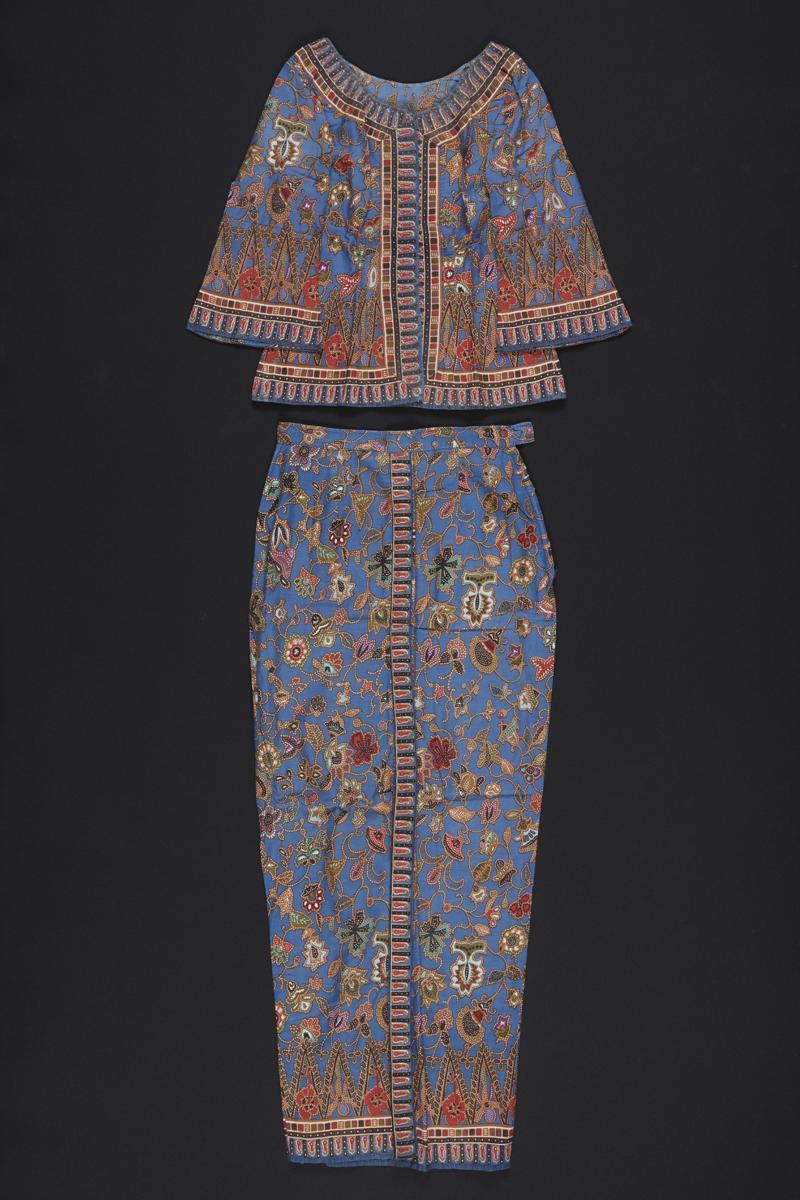 Photo via Roots.sg
Photo via Roots.sg
And here's what it looked like on:
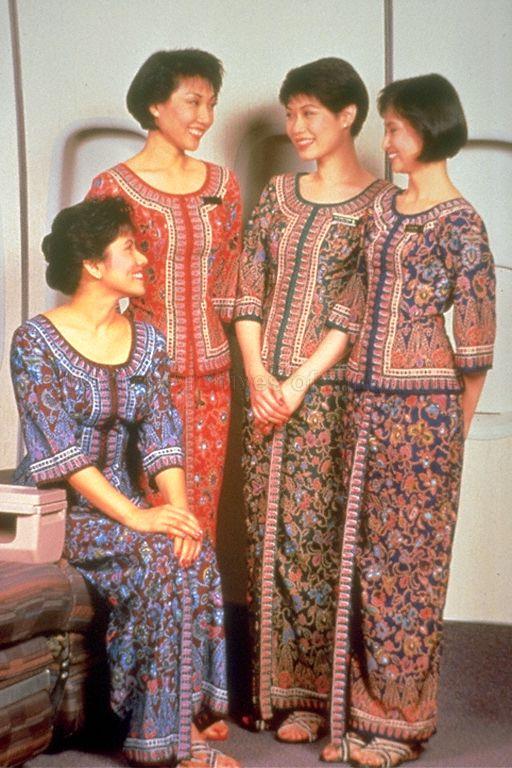 Photo via NAS.
Photo via NAS.
See Biew Wah: the first stewardess-model for the kebaya
To perfect the cut and look of the famous sarong kebaya, Singapore Airlines flew in one of its stewardesses, See Biew Wah, to Paris for a week in 1972 to model the kebaya for Balmain.
According to Silver Kris, Balmain had See carry herself as though she was at work in order to get a feel of the range of movement that the kebaya allowed for.
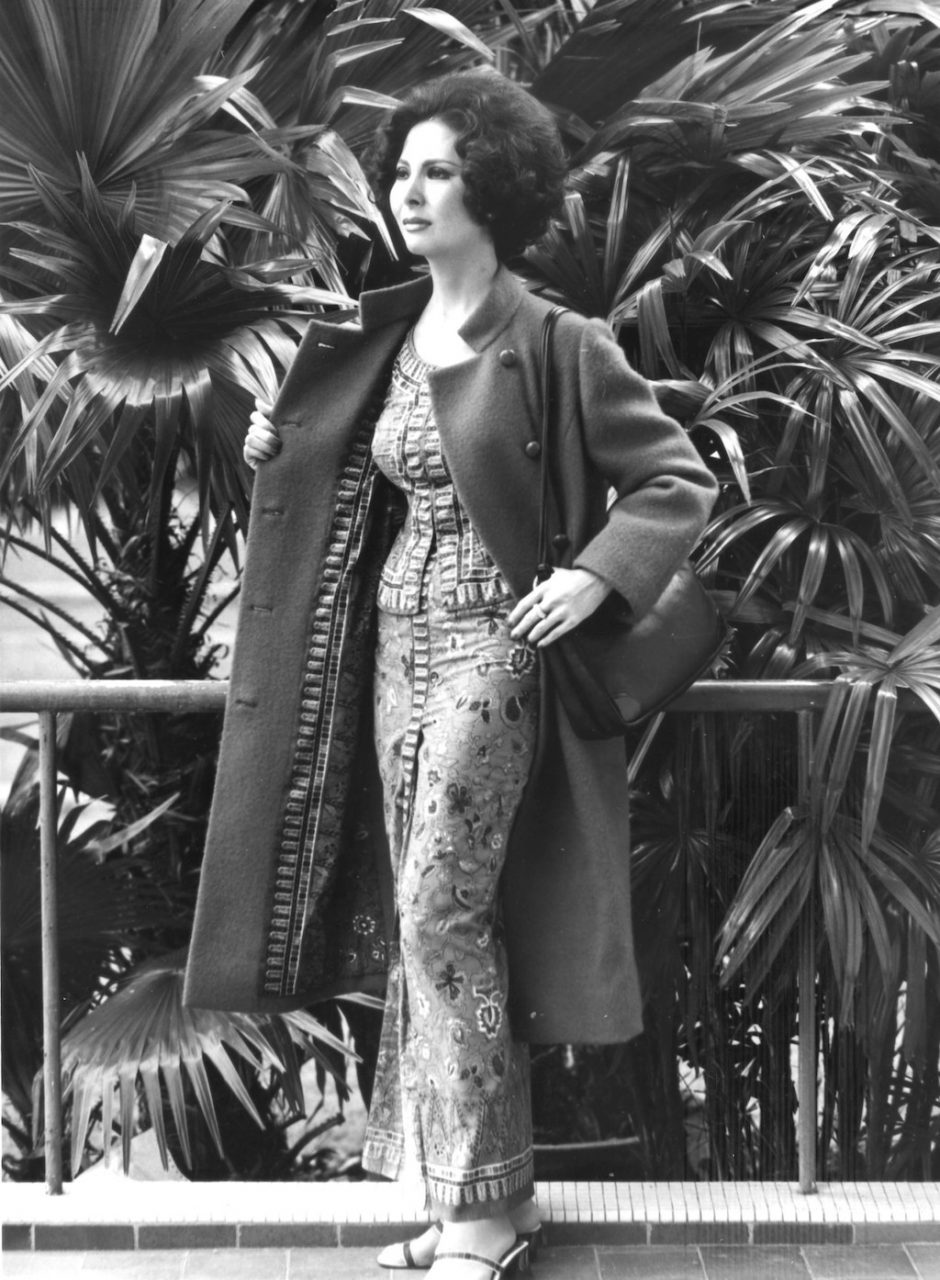 Photo via SIA
Photo via SIA
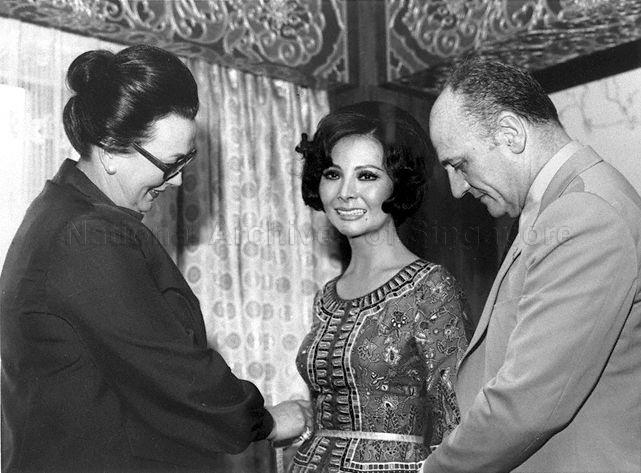 Photo via NAS.
Photo via NAS.
Even though See never got to wear the finished product, she said that the kebaya has always represented something more than just a uniform for a job:
“But really, the kebaya is something so dear to my heart. I’m very attached to it. At the time, we were not yet known for service – but half the battle is won just by wearing the kebaya.”
Colours & batik motif remained unchanged
Over the years, the uniform has been adapted. For instance, the dress was made easier to wear, and the batik print design was also updated.
However, the use of batik and the colours (blue, brown, red and green) for the motif have persisted.
The blue uniform is worn by flight stewardesses, green for leading stewardesses, red for chief stewardesses and purple for in-flight supervisors.
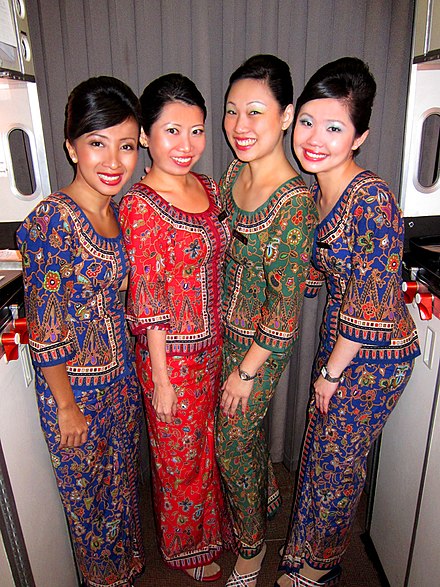 Photo via Wikipedia.
Photo via Wikipedia.
Uniform has become a hospitality icon
Since its inception, the Singapore Girl has become integral to the airline's marketing campaigns, with the uniform consistently being featured in advertisements.
Check out this advertisement that was shot in the 1970s:
In the 1990s, the uniform also made history when a life-sized figure of a SIA flight attendant was installed at Madame Tussaud's wax museum in London.
This is Lim Suet Kwee, the 1990s face of the airline, posing with her wax figure:
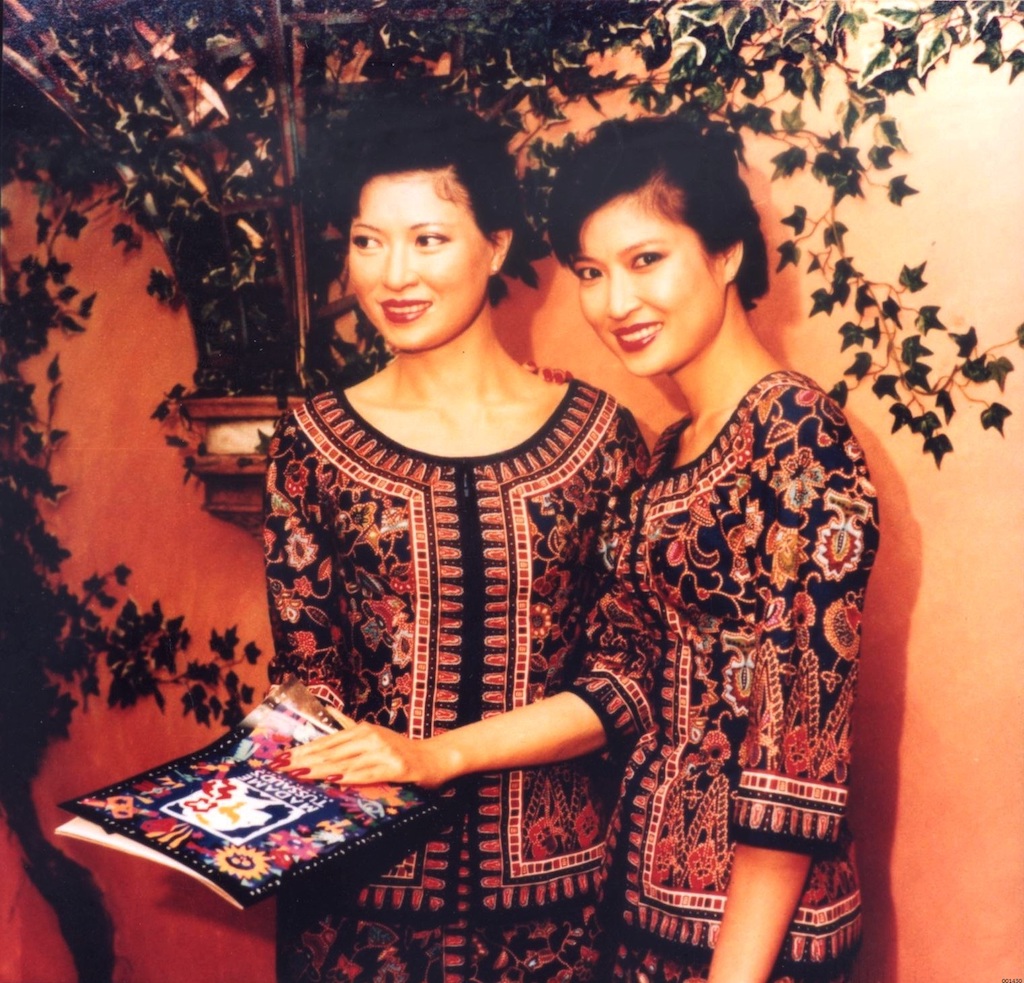 Photo via SIA
Photo via SIA
More recently, in 2015, the second Singapore Girl wax figure was unveiled at Madame Tussauds Singapore.
The figure was modelled after Nur Surya Binte Mohamed Ambiah, a flight stewardess who was with SIA between 2007 and 2011.
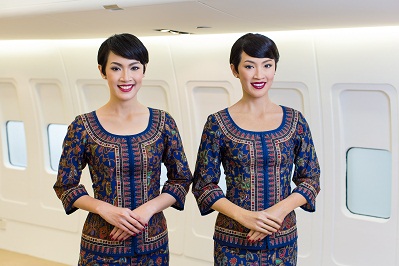 Photo via SIA.
Photo via SIA.
Top photo via SIA.
If you like what you read, follow us on Facebook, Instagram, Twitter and Telegram to get the latest updates.
